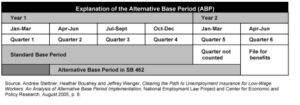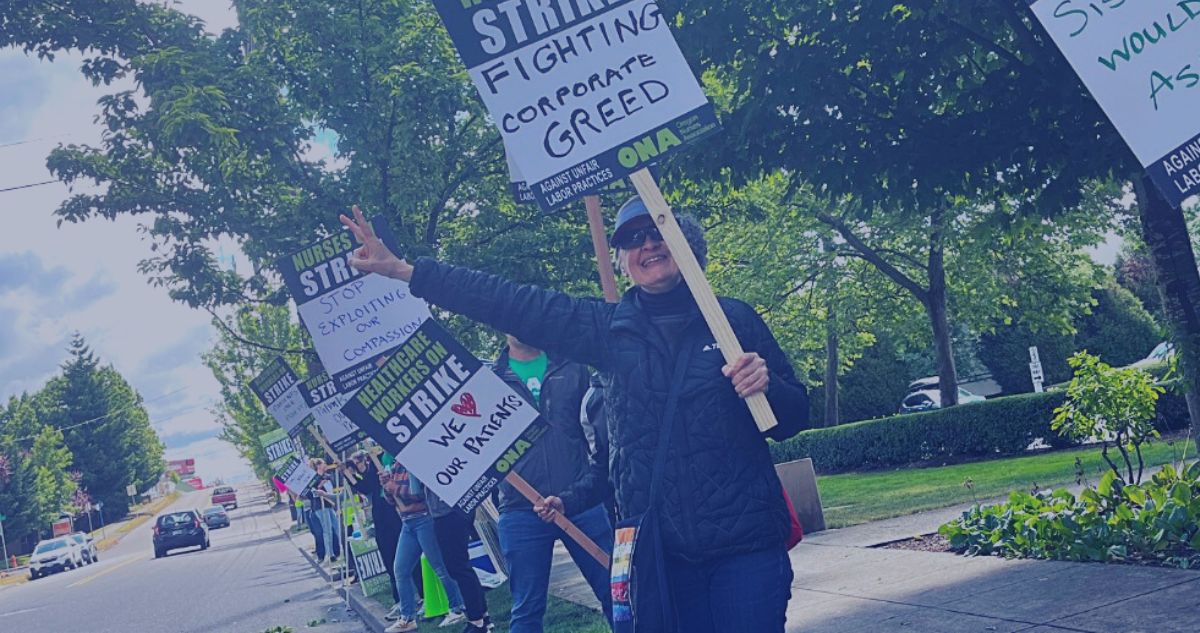Read a pdf of the fact sheet SB 462 Helps Low-Income Workers Qualify for Unemployment Benefits, Oregon Qualify for Federal Funds
Some workers losing their jobs during this recession are not receiving unemployment benefits, even though their employers paid unemployment taxes for them. This is because the state uses outmoded eligibility rules that ignore recent months of work. SB 462 would fix this problem.
The Problem: The rules ignore recent work experience in determining eligibility
To qualify for unemployment insurance benefits in Oregon, an applicant must have worked at least 500 hours (about three months of full-time work) or earned more than $1,000 before becoming unemployed. Unfortunately, some workers who meet these requirements are ineligible for benefits because the rules ignore recent months of work in determining eligibility. The rules were established years ago to allow time for the state to gather and enter wage data from employers. Today, modern computer systems nullify that rationale.
As a result of these outmoded rules, Oregonians who work intermittently or have recently returned to work after a period of unemployment, schooling or caretaking duties have difficulty qualifying for unemployment benefits.
The Fix: Establish an alternative method for counting work hours or earnings
SB 462 would fix the problem by allowing workers who do not qualify using the standard method for determining eligibility to use an alternative method that includes more recent months of work. (That “alternative base period,” or ABP, is discussed in more detail and illustrated in a table below.) Laid-off workers would still have to meet the requirement that they work 500 hours or earn $1,000 before being laid off in order to qualify for benefits.
In enacting SB 462, Oregon would follow the lead of 20 states and the District of Columbia that have adopted the alternative method. These jurisdictions have reported little difficulty in implementing the alternative approach.
The Benefits: Help low-income workers and gain access to federal dollars
Oregon’s Employment Department estimates that SB 462 would extend benefits to 5,600 more Oregon workers each year. Most of those who need ABP to qualify are low-wage workers.
Another benefit of SB 462 is that it would make Oregon eligible for federal funds under the federal stimulus bill, the American Recovery and Reinvestment Act of 2009. By implementing SB 462, Oregon stands to gain an estimated $91 million.
The Details: An alternative base period counts more recent work
The standard base period is the first four of the most recently completed five calendar quarters (January-March, April-June, July-September and October-December). Under the standard and current rules, for example, a worker laid off in late June 2008 would have to exclude six months of his or her most recent work experience: the uncompleted “filing” quarter of April-June and the most recently completed (“lag”) quarter of January-March. Eligibility would be based on wage records for the four quarters of 2007. By contrast, the alternative base period in SB 462 would count the individual’s work experience for April 2007 through March 2008.
The table below shows how the alternative base period works.









